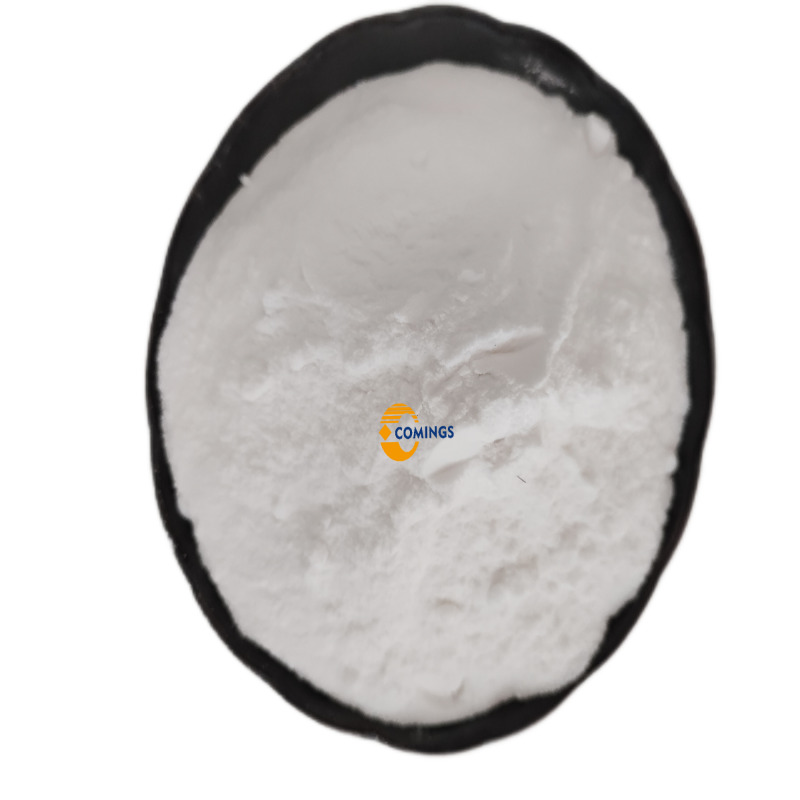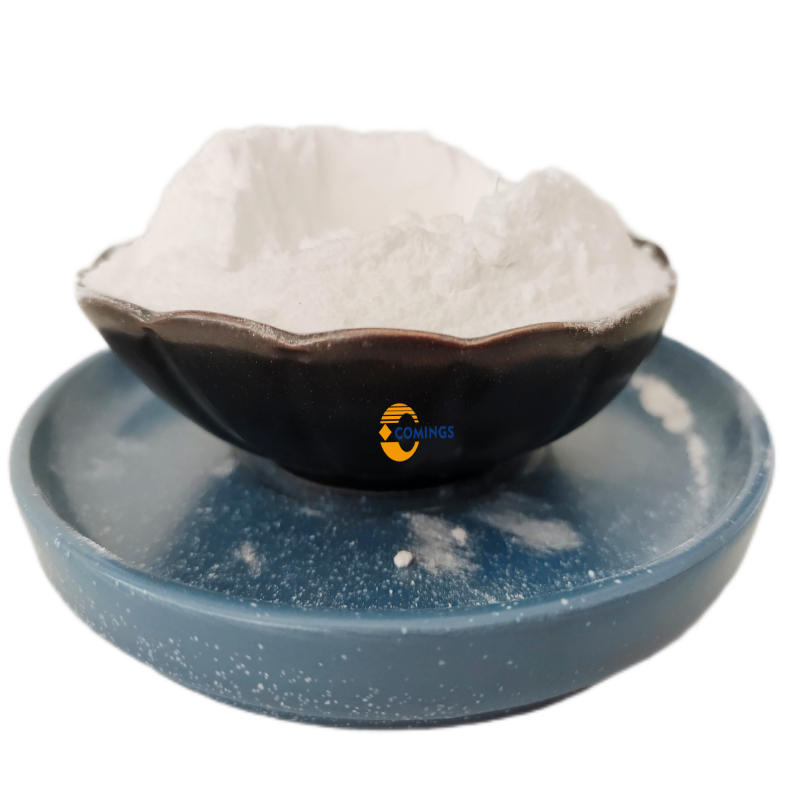-
Categories
-
Pharmaceutical Intermediates
-
Active Pharmaceutical Ingredients
-
Food Additives
- Industrial Coatings
- Agrochemicals
- Dyes and Pigments
- Surfactant
- Flavors and Fragrances
- Chemical Reagents
- Catalyst and Auxiliary
- Natural Products
- Inorganic Chemistry
-
Organic Chemistry
-
Biochemical Engineering
- Analytical Chemistry
-
Cosmetic Ingredient
- Water Treatment Chemical
-
Pharmaceutical Intermediates
Promotion
ECHEMI Mall
Wholesale
Weekly Price
Exhibition
News
-
Trade Service
| Creation: Jack Chen Review: solo ① Lactic acid bacteria (LAB) have safety and diversified metabolic activities, and can be used in synthetic microbial consortia (SMC); ② LAB in SMC helps to clarify how internal ecological pressure drives microorganisms Community assembly and stability and structure; ③LAB can be used to produce vitamins, flavors, preservatives, remove active oxygen, and exchange between cells and substances; ④LAB can be used to eliminate drug-resistant bacteria, treat intestinal flora imbalance, and improve Intestinal function and microbial composition; ⑤ SMC design including the application of LAB has problems such as coexistence instability, difficulty in selecting compatible growth conditions, and insufficient understanding of metabolism and regulation in the community . The editor-in-chief recommends the concept of solo microbiota consortia (Microbiota consortia) is ubiquitous in nature . Compared with the existence of a single individual, the microbial community possesses complex functions and metabolic methods, which are more stable and powerful . South China University of Technology and Technical University of Denmark Jian-Ming Liu and others have published opinion articles on Trends in Biotechnology to discuss the application of lactic acid bacteria in the synthetic microbiota (SMC) . SMC is an artificially designed microbial community with diverse functions and possible applications . It can be composed of key bacterial species from the natural world or constructed by different engineering bacteria, and has broad development prospects in sustainable development . Trends in Biotechnology [IF:19. 536] Harnessing lactic acid bacteria in synthetic microbial consortia in the lactic acid synthesis microbial bio clustering application 10. 1016 / j. tibtech. 2021. 09. 002 09-25, Other the Abstract: Lactic acid Bacteria (LABs) are Important Members in Synthetic Microbial consortia Due to Their ' generally recognized as safe' status and diverse metabolic activities. Defined communities with LAB show great potential in elucidating metabolic interactions that drive their assembly and demonstrating power to address sustainability challenges in food, environment, and health. First Authors: Jian-Ming Liu Correspondence Authors : Peter Ruhdal Jensen All Authors: Jian-Ming Liu,Christian Solem,Ting Lu,Peter Ruhdal Jensen Disclaimer: This article only represents the author's personal views and has nothing to do with China Probiotics. com . The originality and the text and content stated in the article have not been verified by this site. This site does not make any guarantee or commitment to the authenticity, completeness, and timeliness of this article, all or part of the content, and the text. Please readers for reference only, and please Verify the relevant content yourself . Copyright Notice 1. Some of the reprinted articles on this site are not original, and the copyright and liability belong to the original author . 2. All reprinted articles, links and pictures on this website are for the purpose of conveying more information, and clearly indicate the source and author. Media or individuals who do not want to be reprinted can contact us for infringement information that can provide sufficient evidence , Bio149 will be deleted within 12 hours after confirmation . 3. Users are welcome to post original articles to 86371366@qq. com, and publish them to the homepage after review. The copyright and liability belong to the sender . |
Creation: Jack Chen Review: solo
① Lactic acid bacteria (LAB) have safety and diversified metabolic activities, and can be used in synthetic microbial consortia (SMC);
② LAB in SMC helps to clarify how internal ecological pressure drives microorganisms Community assembly and stability and structure;
③LAB can be used to produce vitamins, flavors, preservatives, remove active oxygen, and exchange between cells and substances;
④LAB can be used to eliminate drug-resistant bacteria, treat intestinal flora imbalance, and improve Intestinal function and microbial composition;
⑤ SMC design including the application of LAB has problems such as coexistence instability, difficulty in selecting compatible growth conditions, and insufficient understanding of metabolism and regulation in the community
.
The editor-in-chief recommends the concept of
solo
microbiota consortia (Microbiota consortia) is ubiquitous in nature
.
Compared with the existence of a single individual, the microbial community possesses complex functions and metabolic methods, which are more stable and powerful
.
South China University of Technology and Technical University of Denmark Jian-Ming Liu and others have published opinion articles on Trends in Biotechnology to discuss the application of lactic acid bacteria in the synthetic microbiota (SMC)
.
SMC is an artificially designed microbial community with diverse functions and possible applications
.
It can be composed of key bacterial species from the natural world or constructed by different engineering bacteria, and has broad development prospects in sustainable development
.
Trends in Biotechnology [IF:19.
536]
Harnessing lactic acid bacteria in synthetic microbial consortia
in the lactic acid synthesis microbial bio clustering application
10.
1016 / j.
tibtech.
2021.
09.
002
09-25, Other
the Abstract:
Lactic acid Bacteria (LABs) are Important Members in Synthetic Microbial consortia Due to Their ' generally recognized as safe' status and diverse metabolic activities.
Defined communities with LAB show great potential in elucidating metabolic interactions that drive their assembly and demonstrating power to address sustainability challenges in food, environment, and health.
First Authors:
Jian-Ming Liu
Correspondence Authors :
Peter Ruhdal Jensen
All Authors:
Jian-Ming Liu,Christian Solem,Ting Lu,Peter Ruhdal Jensen
Disclaimer: This article only represents the author's personal views and has nothing to do with China Probiotics.
com
.
The originality and the text and content stated in the article have not been verified by this site.
This site does not make any guarantee or commitment to the authenticity, completeness, and timeliness of this article, all or part of the content, and the text.
Please readers for reference only, and please Verify the relevant content yourself
.
Copyright Notice
1.
Some of the reprinted articles on this site are not original, and the copyright and liability belong to the original author
.
2.
All reprinted articles, links and pictures on this website are for the purpose of conveying more information, and clearly indicate the source and author.
Media or individuals who do not want to be reprinted can contact us for infringement information that can provide sufficient evidence , Bio149 will be deleted within 12 hours after confirmation
.
3.
Users are welcome to post original articles to 86371366@qq.
com, and publish them to the homepage after review.
The copyright and liability belong to the sender
.
Creation: Jack Chen Review: solo
① Lactic acid bacteria (LAB) have safety and diversified metabolic activities, and can be used in synthetic microbial consortia (SMC);
② LAB in SMC helps to clarify how internal ecological pressure drives microorganisms Community assembly and stability and structure;
③LAB can be used to produce vitamins, flavors, preservatives, remove active oxygen, and exchange between cells and substances;
④LAB can be used to eliminate drug-resistant bacteria, treat intestinal flora imbalance, and improve Intestinal function and microbial composition;
⑤ SMC design including the application of LAB has problems such as coexistence instability, difficulty in selecting compatible growth conditions, and insufficient understanding of metabolism and regulation in the community
.
The editor-in-chief recommends the concept of
solo
microbiota consortia (Microbiota consortia) is ubiquitous in nature
.
Compared with the existence of a single individual, the microbial community possesses complex functions and metabolic methods, which are more stable and powerful
.
South China University of Technology and Technical University of Denmark Jian-Ming Liu and others have published opinion articles on Trends in Biotechnology to discuss the application of lactic acid bacteria in the synthetic microbiota (SMC)
.
SMC is an artificially designed microbial community with diverse functions and possible applications
.
It can be composed of key bacterial species from the natural world or constructed by different engineering bacteria, and has broad development prospects in sustainable development
.
Trends in Biotechnology [IF:19.
536]
Harnessing lactic acid bacteria in synthetic microbial consortia
in the lactic acid synthesis microbial bio clustering application
10.
1016 / j.
tibtech.
2021.
09.
002
09-25, Other
the Abstract:
Lactic acid Bacteria (LABs) are Important Members in Synthetic Microbial consortia Due to Their ' generally recognized as safe' status and diverse metabolic activities.
Defined communities with LAB show great potential in elucidating metabolic interactions that drive their assembly and demonstrating power to address sustainability challenges in food, environment, and health.
First Authors:
Jian-Ming Liu
Correspondence Authors :
Peter Ruhdal Jensen
All Authors:
Jian-Ming Liu,Christian Solem,Ting Lu,Peter Ruhdal Jensen
Disclaimer: This article only represents the author's personal views and has nothing to do with China Probiotics.
com
.
The originality and the text and content stated in the article have not been verified by this site.
This site does not make any guarantee or commitment to the authenticity, completeness, and timeliness of this article, all or part of the content, and the text.
Please readers for reference only, and please Verify the relevant content yourself
.
Copyright Notice
1.
Some of the reprinted articles on this site are not original, and the copyright and liability belong to the original author
.
2.
All reprinted articles, links and pictures on this website are for the purpose of conveying more information, and clearly indicate the source and author.
Media or individuals who do not want to be reprinted can contact us for infringement information that can provide sufficient evidence , Bio149 will be deleted within 12 hours after confirmation
.
3.
Users are welcome to post original articles to 86371366@qq.
com, and publish them to the homepage after review.
The copyright and liability belong to the sender
.
Creation: Jack Chen Review: solo
① Lactic acid bacteria (LAB) have safety and diversified metabolic activities, and can be used in synthetic microbial consortia (SMC);
② LAB in SMC helps to clarify how internal ecological pressure drives microorganisms Community assembly and stability and structure;
③LAB can be used to produce vitamins, flavors, preservatives, remove active oxygen, and exchange between cells and substances;
④LAB can be used to eliminate drug-resistant bacteria, treat intestinal flora imbalance, and improve Intestinal function and microbial composition;
⑤ SMC design including the application of LAB has problems such as coexistence instability, difficulty in selecting compatible growth conditions, and insufficient understanding of metabolism and regulation in the community
.
The editor-in-chief recommends the concept of
solo
microbiota consortia (Microbiota consortia) is ubiquitous in nature
.
Compared with the existence of a single individual, the microbial community possesses complex functions and metabolic methods, which are more stable and powerful
.
South China University of Technology and Technical University of Denmark Jian-Ming Liu and others have published opinion articles on Trends in Biotechnology to discuss the application of lactic acid bacteria in the synthetic microbiota (SMC)
.
SMC is an artificially designed microbial community with diverse functions and possible applications
.
It can be composed of key bacterial species from the natural world or constructed by different engineering bacteria, and has broad development prospects in sustainable development
.
Trends in Biotechnology [IF:19.
536][The IF: 19.
536]
Harnessing Bacteria lactic acid in Synthetic Microbial consortia
of microorganisms of lactic acid bacteria cluster synthetic biological applications
10.
1016 / j.
tibtech.
2021.
09.
002
09-25, Other
the Abstract:
Lactic acid Bacteria (LABs) are in Synthetic Microbial Important Members consortia due to their'generally recognized as safe' status and diverse metabolic activities.
Defined communities with LAB show great potential in elucidating metabolic interactions that drive their assembly and demonstrating power to address sustainability challenges in food, environment, and health.
First Authors:
Jian -Ming Liu
Correspondence Authors:
Peter Ruhdal Jensen
All Authors:
Jian-Ming Liu,Christian Solem,Ting Lu,Peter Ruhdal Jensen






